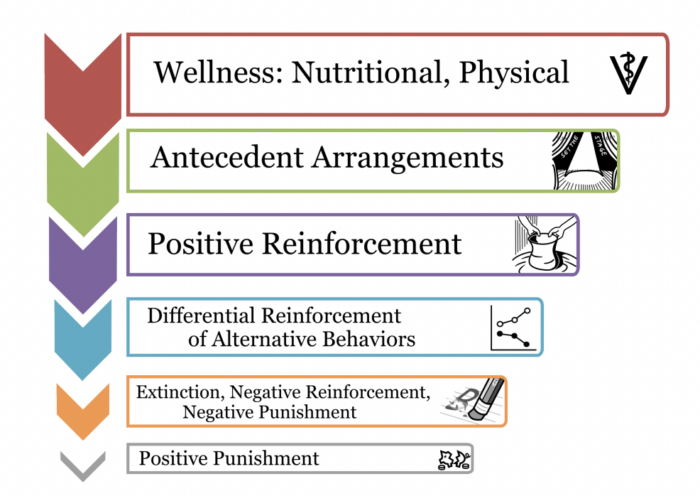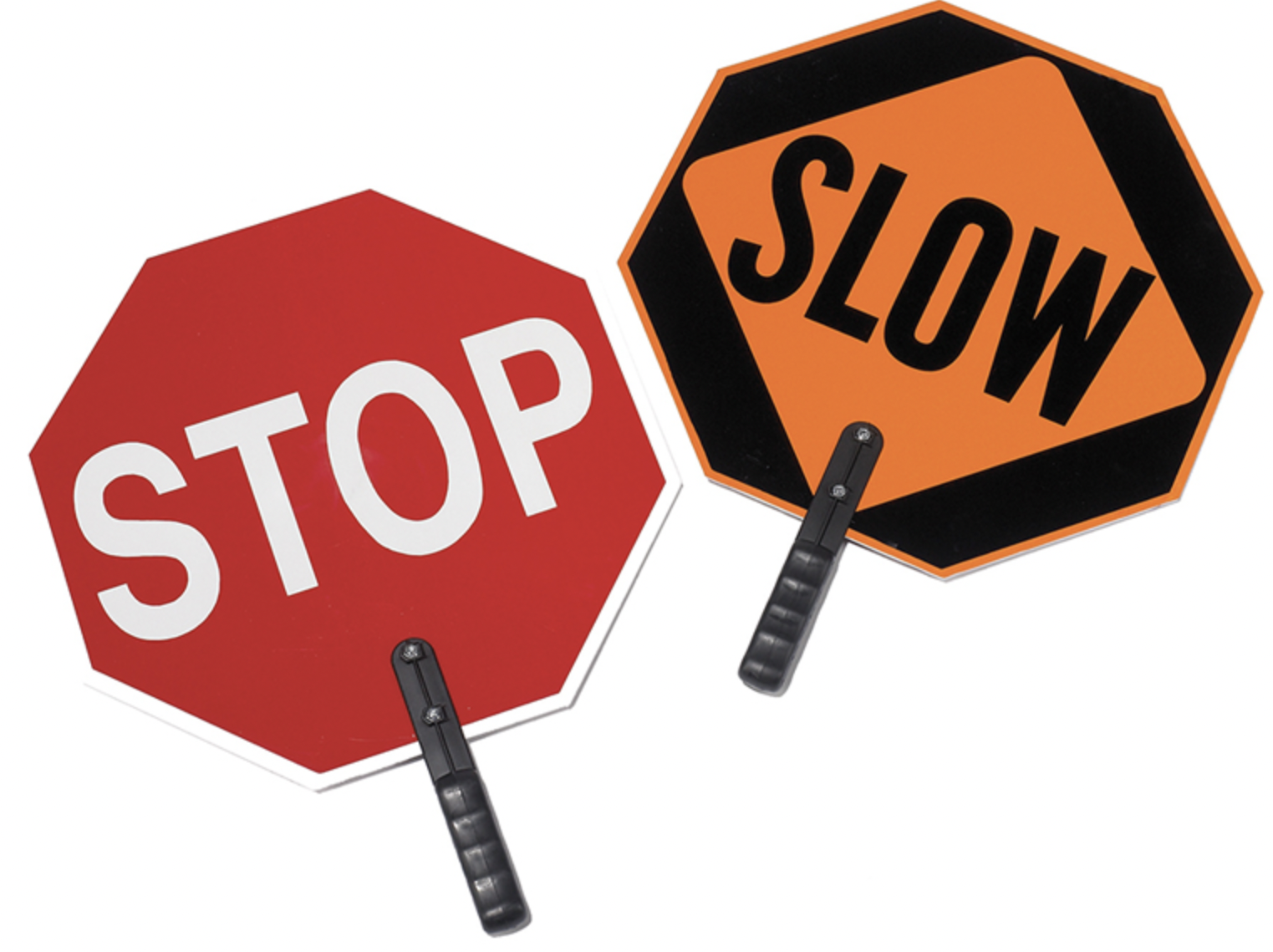In episode 47 of the Paws & Reward Podcast, Dr. Chris Pachel and I talk about The Humane Hierarchy for both our dogs and their people. The Humane Hierarchy is a framework that trainers, behavior consultants, and veterinary behaviorists use when working with their clients. It’s an ethical approach, inviting professionals to develop a behavior modification plan rooted in least intrusive, minimally aversive options.
Since I love listening to Chris explain these concepts, I knew he’d be the perfect guest for the show. Especially since he’s a co-founder of LIMA beings with me! As we discuss each step of the Humane Hierarchy, we provide examples of what it would look like in real life. Watch our conversation on my YouTube Channel.
What is the Humane Hierarchy?
The Humane Hierarchy is a framework developed by Dr. Susan Friedman that outlines a hierarchy for behavior change procedures. It starts from the most positive and least intrusive ways to approach changing behavior in dogs (and humans) and works its way up to more intrusive and less positive approaches. It’s a way to guide behavior professionals when working with clients.
What are the steps (or framework) of the Humane Hierarchy?

- Medical, Nutritional, Physical
- Antecedent Arrangement (Proactive Management)
- Positive Reinforcement
- Differential Reinforcement of Alternative Behaviors
- Extinction, Negative Reinforcement, Negative Punishment
- Positive Punishment
What does the Humane Hierarchy look like in practice?
Let’s use the example of a dog barking at the fence at another dog passing by on the sidewalk. Using the Humane Hierarchy, we start at the first tier:
#1: Addressing Wellness, Nutrition, and Physical Needs:
We want to always make sure the dog is healthy and all their needs are being met. We know there are certain conditions (allergies, skeletal pain, thyroid or steroid levels in the body) that can contribute to agitation, arousal, or a decrease in mental capacity. Everything we try to do to change the dog’s behavior will be more difficult if we don’t address these physical needs first. Once those are addressed, we move onto tier two.
#2: Antecedent Arrangement:
These are proactive management techniques. Antecedents are the conditions under which a particular behavior occurs. In this case, the behavior of barking at other dogs passing by, the antecedents are being outside in the backyard, behind a fence, when a dog appears in the environment.
Each time the dog practices this behavior it creates a pattern or habit of behavior. We want to manage the environment to prevent the dog from rehearsing the behavior over and over. A few examples might include, placing a visual barrier, putting the dog on a long-line, or creating a secondary fence further back from the sidewalk to give the dog more distance from the passing dog.
By knowing the antecedents (the conditions that cause the behavior to occur), we can better manage the environment to limit or stop the behavior.
#3: Positive reinforcement:
Now that we have modified the environment to prevent unwanted behavior(s), we can start to reinforce desired behaviors we would like to see instead. Teaching these skills under threshold and out of the problematic context is critical for success and building fluency in the new desired behaviors.
For this particular example, reinforcing a strong recall and rewarding a lack of reaction would be a good starting point while also using management techniques. Also, understanding behavior change takes time, patience, and consistency is key. Behavior is fluid, we all have good and bad days. Revisiting step one periodically, to make sure your dog is still physically well, is necessary as well
Pausing and slowing down before moving onto tier four can be helpful when assessing how things are going and if changes need to be made.

#4: Differential Reinforcement of Alternative Behaviors
This step involves incorporating the skills we taught the dog out of context and generalizing them into the problematic context. For the example of the dog barking at the fence, we can reinforce eye contact, nose targeting, grabbing a toy, or laying on a mat instead of barking. However, these behaviors need to be trained in a calm and non-distracting environment before gradually introducing your dog to a more distracting environment. Be careful of expecting too much too soon from your dog.

#5: Extinction, Negative Reinforcement, Negative Punishment
At this tier, we hit the stop sign. These are the things that might be perceived by the learner as aversive. We might not be adding the aversives as a consequence yet, but taking away something that was reinforcing to them does fall into this category.
This technique can feel unpleasant to the learner and that’s why we want to slow down or stop before considering this step.
Before we reach for these tools, we want to be clear with ourselves and our learners:
- Are these healthy?
- Did we set up the environment in a way that helps them be successful?
- Do they have fluency in the new desired behaviors?
- Have I taught them the new desired behaviors under these conditions?
If the answer is no for any of those questions, then manipulating consequences under tier 5 isn’t where we want to be. Going back to the previous tiers is required.
#6: Positive punishment
Tier six is behind another stop sign. This is where we add in an aversive consequence to make the behavior less likely to occur in the future. Leash corrections and an interruptive stimulus like a shaker can or a shock collar fall into this category.
There is a big difference between interrupting the behavior in the moment and changing the future behavior. Anything that is startling or distracting only interrupts the behavior in the moment and does not change or modify the behavior for the future.
Will the aversive technique always be needed as an interruption in order for the behavior to stop? Most likely, yes. Positive punishment rarely changes behavior and this can become a welfare concern, bringing us back to tier one.
Positive punishment is also not the most effective way to teach or learn. The likelihood of ever needing this tier is incredibly low if you are using tiers one through three and reassessing if you’re not seeing progress. This tier also carries the greatest amount of risk.

How can we use the Humane Hierarchy as a tool or framework for engaging with our clients, friends, and colleagues?
- Medical, Nutritional, Physical
- Pain or other health-related issues can impact behavior and reactions
- Understanding that everyone has needs
- Taking someone’s needs into account prior to bringing up something hard
- Talking to someone when you’ve had time to relax and rest
- Respecting boundaries and mental well-being
- Pain or other health-related issues can impact behavior and reactions
- Antecedent Arrangement
- Modify the environment to help with their ability to learn and process information
- Have a conversation face to face for eye contact, instead of over text where things could be misconstrued
- Making accommodations for friends or colleagues based on their learning needs
- Modify the environment to help with their ability to learn and process information
- Positive Reinforcement
- Giving positive feedback
- Reinforcing choices that clients make with their dogs no matter how small
- Identifying what’s truly reinforcing for the learner instead of assuming what’s reinforcing based on our own personal preferences
- Expressing appreciation using the learner’s preferred method of reinforcement
- Giving positive feedback
- Differential Reinforcement of Alternative Behaviors
- Offering multiple options as solutions to accommodate different needs
- Curiosity in the place of judgment
- Asking questions with a genuine desire to listen and learn
- Offering multiple options as solutions to accommodate different needs
- Extinction, Negative Reinforcement, Negative Punishment
- Reactive management
- Not addressing issues in a calm manner, but rather reacting to them in the moment in a way that can be harsh or hurtful
- Time outs for children
- Removing things that make others feel safe/comfortable
- Reactive management
- Positive Punishment
- Unfortunately, this is the one we’re really good at with people.
- Criticizing, correcting, or chastising behavior rather than looking for mutual solutions
- Unfortunately, this is the one we’re really good at with people.
Where to find Dr. Chris Pachel:
- Dr. Chris Pachel’s Website
- Episode 34: The Power of Relaxation with Dr. Chris Pachel
- Episode #1: 4 Strategies to Support You During the Training Process with Dr. Chris Pachel

